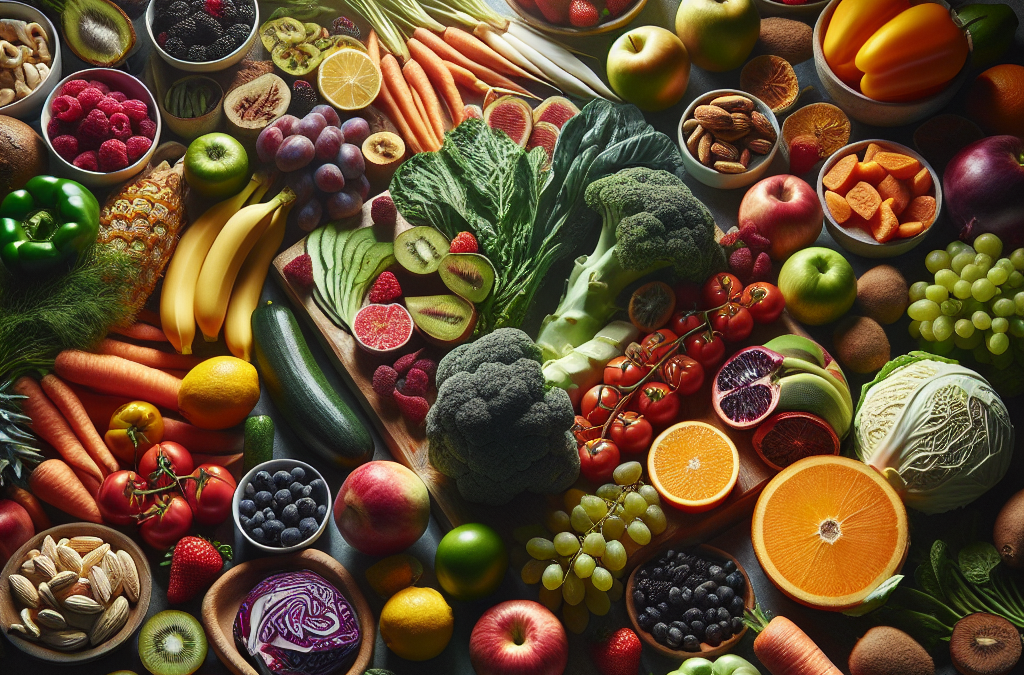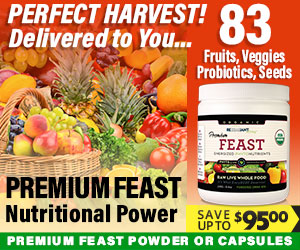Understanding the Basics of Raw Food Nutrition
What is Raw Food Nutrition?
So, let’s get straight into it — raw food nutrition is all about eating unprocessed, uncooked foods. Think of it as a back-to-basics approach to eating that emphasizes fruits, vegetables, nuts, seeds, and sprouted grains. The idea is that by keeping food in its natural state, we preserve all those lovely nutrients that might otherwise be destroyed by cooking. And let me tell you, there’s nothing quite like biting into a fresh apple and just feeling the crunch and juice.
For me, going raw was a game-changer. I found that my energy levels skyrocketed, and my digestive issues seemed to fade away. It’s kind of like rediscovering what food is meant to be — vibrant, colorful, and packed with vitality. Plus, there’s an empowering aspect to making food choices that align with what our bodies truly need.
Of course, it can be a little scary at first. I remember feeling overwhelmed by the variety of raw foods available — from kale smoothies to zoodles (zucchini noodles). But trust me, once you dive in, it becomes a fun little adventure exploring new ingredients and recipes.
The Health Benefits of a Raw Food Diet
Boosting Nutrient Intake
One of the primary benefits I noticed when I switched to a raw food diet was the increase in my nutrient intake. Raw foods are brimming with vitamins, minerals, and enzymes that may not survive the cooking process. I felt like I was giving my body a powerful dose of nature’s goodness every day. The more I learned about how food impacts my health, the more excited I became to experiment with raw recipes.
In particular, I loved the vibrant colors of raw foods. Each hue often represents different nutrients. For instance, dark leafy greens are packed with iron and calcium, while bright orange carrots provide beta-carotene. Knowing that every meal was a chance to load up on nutrition made me view food through a refreshing lens as a source of vitality.
Not to mention, I noticed a significant improvement in my skin health. Friends started complimenting me on my glowing complexion, and I honestly believe it came from all those colorful salads and smoothies filled with whole foods.
Preparing Raw Foods: Tips and Tricks
Essential Tools for Raw Food Preparation
Let’s talk about the kitchen gear that can make your raw food journey a breeze. Before diving headfirst into this lifestyle, I made sure I had a few essential tools that streamlined my preparation process. A quality blender became my best friend — smoothies and soups were a regular part of my diet, and a good blender can make it all happen in minutes!
Then there’s the food processor. Oh man, if you’re into making raw desserts or dips, you absolutely need one of these babies. I’ve whipped up everything from nut butter to raw brownie batter using my food processor, and it saves so much time. You might even find that you start enjoying prepping meals since it feels less like work and more like play.
Lastly, don’t underestimate the power of a good knife. Having sharp knives makes chopping those veggies much quicker and more enjoyable. Not only does it save time, but it also helps you create prettier presentations, making every meal a feast for the eyes!
Maintaining a Balanced Raw Food Diet
Addressing Common Nutritional Concerns
As with any dietary choice, balance is key. When I first went raw, I initially struggled to maintain a well-rounded intake. I soon learned the importance of incorporating a variety of foods to ensure I was getting all the essential nutrients. For example, I quickly discovered that simply munching on salads wasn’t enough; I had to think about proteins and fats too!
To tackle this, I added more variety to my meals. Nuts and seeds became my go-to sources of healthy fats, while things like chickpeas and lentils (that could be sprouted!) added some much-needed protein. Keeping a diverse range of ingredients in my kitchen made balancing the diet way easier, and I found some creative combinations that kept things interesting.
Get Certified Organic Whole Food Nutrition – Nutrient Dense Supplement
Also, it’s super important to listen to your body. I pay attention to how I feel after meals. If something doesn’t sit right, I adjust accordingly. That’s the beauty of this journey — tuning in to what works for me personally means optimizing health in a way that feels right.
Overcoming Challenges in a Raw Food Lifestyle
Social Situations and Eating Out
Now, let’s be real — living a raw food lifestyle can present some challenges, particularly when eating out or during social gatherings. I remember feeling like a fish out of water when dining with friends at traditional restaurants. It took a bit of creative thinking, but I learned some strategies to stay on track while also having a good time.
When hitting up restaurants, I started checking menus ahead of time. Most places offer salads or veggie dishes; I’d just ask for them to be customized (hold the dressing or add extra avocado, please!). Most establishments are more accommodating than you might think, and they appreciate patrons who are mindful of their diets.
But during parties or get-togethers, that’s where it got trickier. I started bringing my own raw veggie platter or a delicious homemade dip to share. Not only did it give me something to munch on, but it also inspired others to try out some of my favorite snacks. Spread the raw food love, I say!
Conclusion: Embracing the Raw Food Lifestyle
Overall, diving into raw food nutrition has been both a delicious and eye-opening journey for me. The health benefits are tremendous, from increased energy to improved digestive health, and I genuinely feel more connected to my food. Sure, it requires some planning and experimenting (I’ve had my share of kitchen fails!), but the rewards are so worth it. Every bite of whole, fresh food feels like an investment in my health, and I wouldn’t trade that for anything.
I encourage you to consider trying it out! Whether you want to dive into a raw diet fully or simply incorporate more raw foods into your meals, you’ll reap some great benefits for your well-being. Remember, it’s about progress, not perfection — enjoy the journey!
FAQs
1. What foods can I eat on a raw food diet?
You can enjoy a plethora of foods, including fruits, vegetables, nuts, seeds, sprouts, and seaweed. The key is to keep them as close to their natural state as possible!
2. How can I ensure I’m getting enough protein?
Incorporate raw sources of protein such as nuts, seeds, lentils (sprouted), and legumes. These options can help you meet your protein needs while enjoying the benefits of raw food.
3. Is it expensive to maintain a raw food diet?
It can be, especially if you’re purchasing a lot of specialty items. However, focusing on whole foods and buying seasonal produce can help reduce costs significantly.
4. Can I cook any food on a raw food diet?
The primary focus is on uncooked foods, but some choose to lightly steam or dehydrate foods to enhance flavors without cooking them fully. It’s all about your personal preference!
5. How can I overcome cravings for cooked foods?
It’s natural to crave familiar foods; you can combat this by experimenting with new raw recipes that provide similar textures or flavors. Creating satisfying meals can help you transition smoothly.




